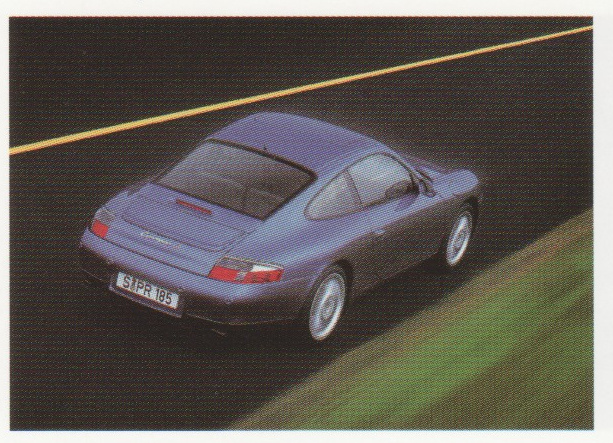1999 - Special on 911 (996) Carrera 4
PORSCHE PRESS KIT 1999 - Rest of the World
Model year 1999 - 911 (996) Carrera 4
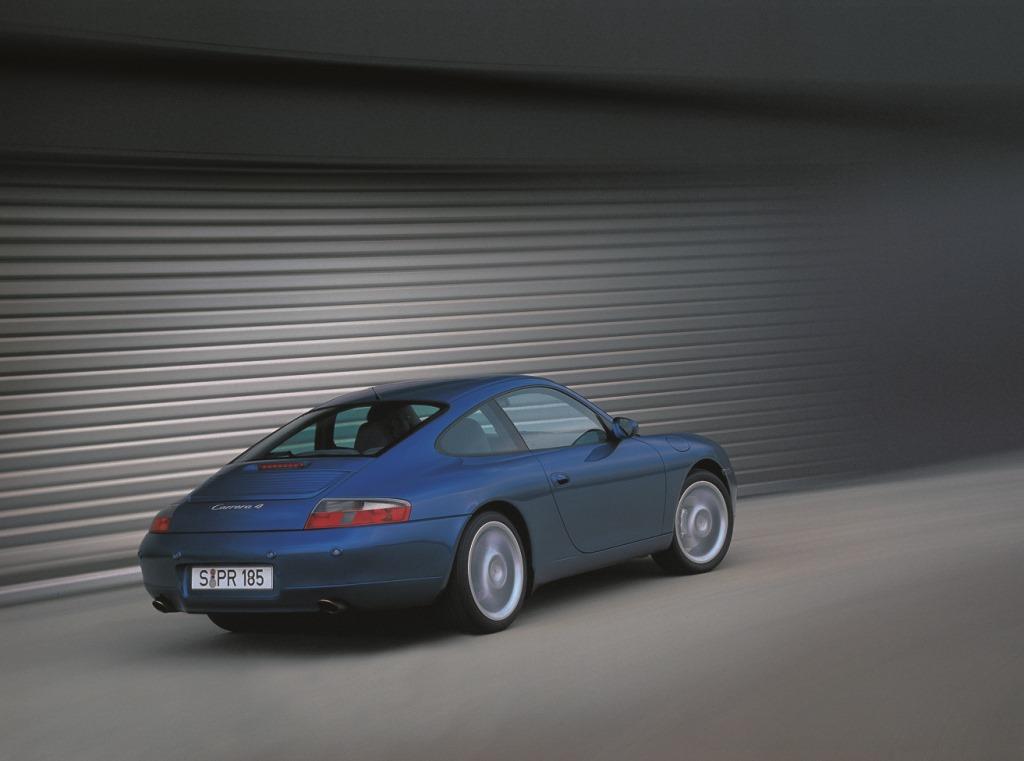
Porsche 911 Carrera 4
The highlights
Permanent all-wheel drive with perfect power distribution
The long and intensive experience with all-wheel drive systems enabled the engineers at Porsche to find a particularly effective solution. The variable torque distribution to the front axle via a viscous coupling in the front differential housing guarantees excellent traction and a very high level of driving safety in all types of road conditions, without the driver having to influence the traction aids in any way.
Porsche Stability Management
For the first time with the Carrera 4, Porsche is using the driving dynamics control PSM (Porsche Stability Management). The task of the system is to stabilize the car on "excursions" into the limit area through targeted intervention in the engine management and braking system in the longitudinal and transverse directions is suppressed by early reins. The aim of the vote was to provide a brief but decisive help on all four wheels in the event of an unexpected approach to the physically given limits.
Electronic accelerator pedal
An accelerator pedal that only receives electrical signals via a sensor to Motronic, and a servomotor to operate the throttle cap are the indispensable requirements of a vehicle dynamics control of the quality of Porsche Stability Management. The high level of electronics expenditure pays off not only in borderline situations. The responsiveness of the engine is made possible by e-gas even better and more responsive; consumption can be reduced by an optimal adjustment as the throttle valve position can be lowered to the map. The exhaust emissions are also further reduced by appropriate measures. And finally, the e-gas can also improve the control quality of the cruise control.
Large-volume side airbags as standard
In addition to the full-size airbags for the driver and front passenger, the new and groundbreaking Porsche Side Impact Protection System (POSIP) is part of the standard equipment. It consists of two side airbags that are housed in the doors and door panels that have been designed to absorb energy. The two airbags have a large volume of 30 liters and are therefore effective over the entire seat adjustment range. POSIP improves the protection of the head, chest, arms and pelvis. And this even with the convertible roof open and the side windows lowered.
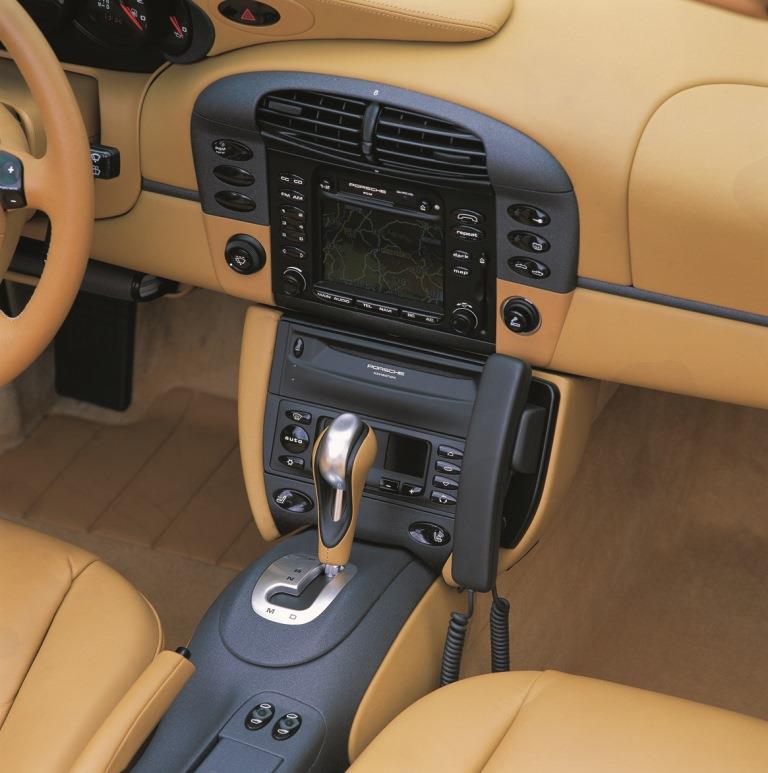
For the first time at Porsche: all-wheel drive and automatic
The new Carrera 4 is the first Porsche in which the customer can combine all-wheel drive with both a six-speed transmission and the five-speed Tiptronic S.
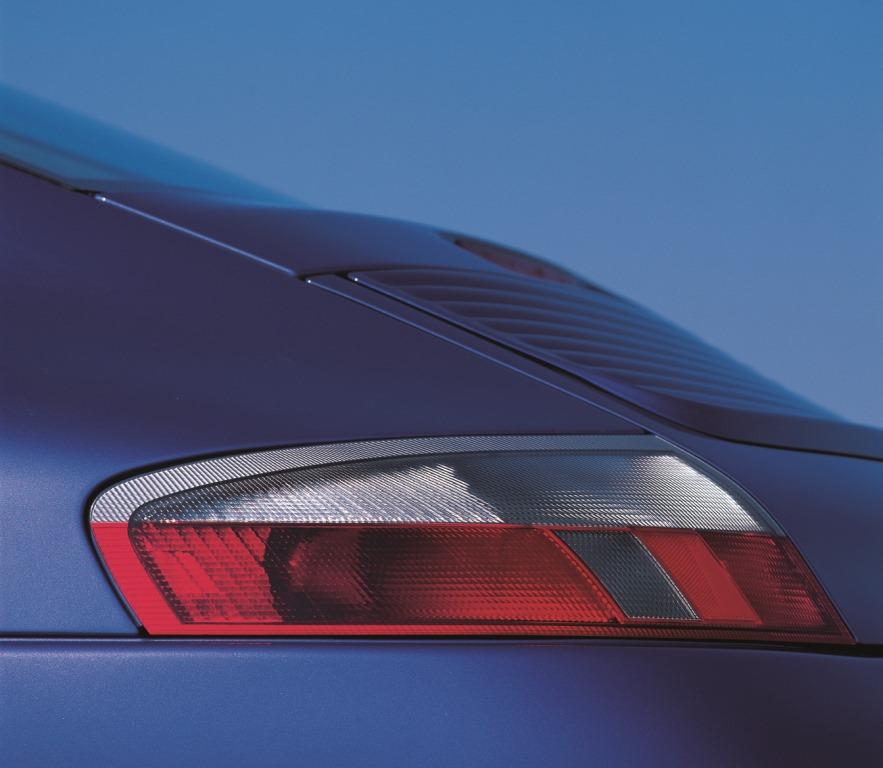
New headlight graphics
Like all Porsche 911s of the 1999 model year, the Carrera 4 has a different graphics for the light units. The turn signal inserts in the headlights are white and in the taillights white-gray instead of orange.
Exclusive aluminum wheels for the Carrera 4
The Porsche 911 Carrera 4 has 17-inch light-alloy wheels in a distinctive design that is characterized by an unusual spoke look as a distinctive feature. The spokes cut deeply in the center of the wheel become stronger towards the rim, and the connection of the spokes far to the outside in the area of the rim flange makes the wheel appear stronger and larger. The 17 inch wheel is the right choice, especially for driving comfort-oriented sports car drivers.
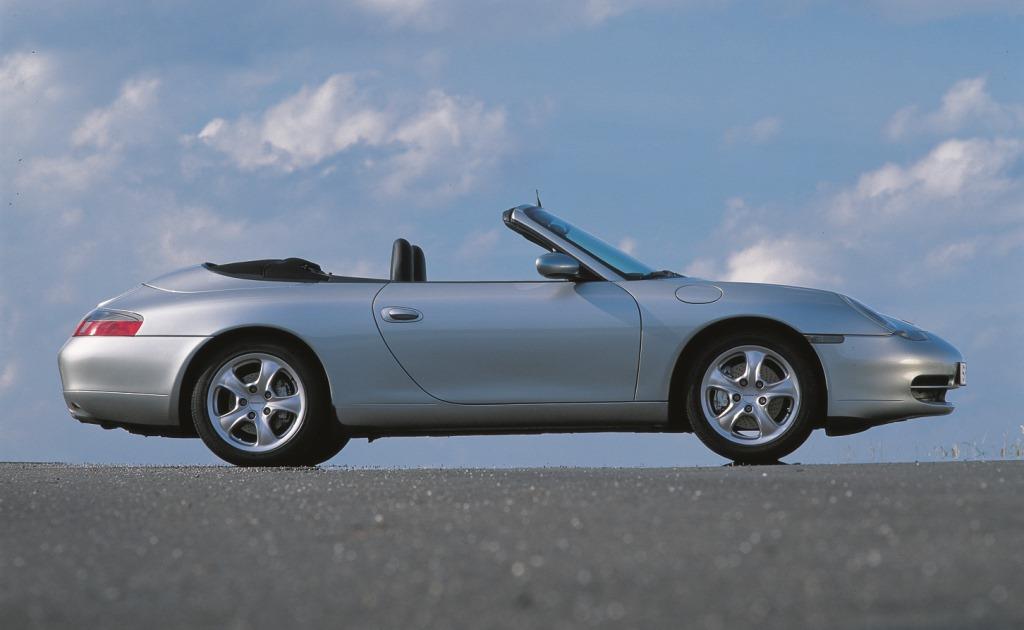
Great driving safety, excellent driving characteristics
Springs, stabilizers and shock absorbers are specially designed for the driving dynamics of the all-wheel drive version. A consistent adaptation of the axle geometry to the all-wheel drive technology and newly adjusted elasticities on the front axle ensure neutral self-steering behavior up to the limit of grip and largely sound out the physical limits of driving when cornering.
High crash safety
The defined deformability of the sheet steel body ensures that the occupants are exposed to very little stress in the event of an accident. The consistent pursuit of passive safety, which accompanied the entire development of the new 911, and the results of numerous crash tests strengthen the conviction of the engineers at Porsche that they have created what is probably the safest high-performance sports car in the world.
Discreet distinguishing features
According to the principle "to be more than seem", the Carrera 4 does not show its superiority in a noticeable way. The lettering Carrera 4 shines titanium-colored on the engine cover and decorates the hubcaps in black. Special 17-inch wheels and titanium-colored brake calipers are those Further optical identifying features: like all Porsche 911s of the 1999 model year, the Carrera 4 shows the above-mentioned changed graphics of the light units.
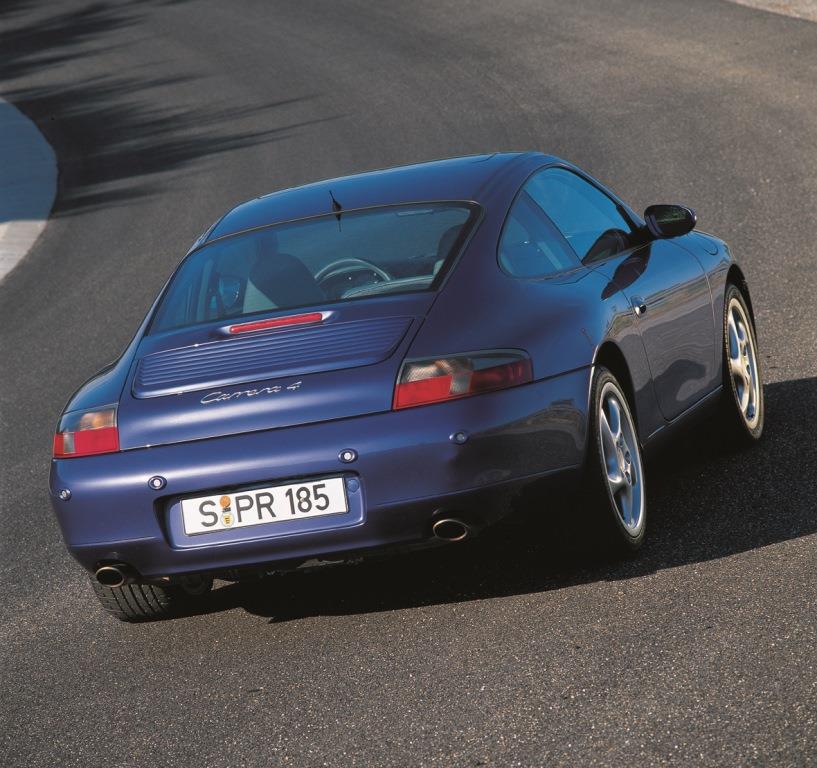
Low drag and minimal lift
The drag coefficient of the body of the 911 is low compared to other sports cars. The product of the Cw value and the frontal area is also advantageously small at 0.58 m2. In addition, the 911 Carrera 4 and the Carrera are characterized by their low lift values. On the front axle, the lift factor is CAV = 0.08; on the rear axle, supported by the extendable spoiler, this value is only CAH = 0.05.
Water-cooled boxer engine
Good cylinder filling thanks to four-valve technology and stable thermal conditions thanks to water cooling make the Porsche boxer engine a high-performance unit. With a displacement of 3.4 liters, the 911 Carrera achieves an output of 300 hp (221 kW) and a top speed of 280 km / h (275 km / h with Tiptronic S). The concept of the boxer engine offers decisive advantages for the construction of sports cars. Its mass balance is perfect, the dimensions are compact, a short and stiff crankshaft allows high speeds.
Aluminum suspensions
All wishbones of the wheel suspension and the two axle carriers integrated into the body are made of light metal. The design of the front axle and its driving dynamics have been adapted to the drive of the front wheels.
Four-piston monobloc brake calipers
After positive experiences in racing, the 911 Carrera 4, like all other Porsche models, has four-piston monobloc brake calipers made of light alloy. Special advantage: high operational reliability and minimal fading even under extreme loads.
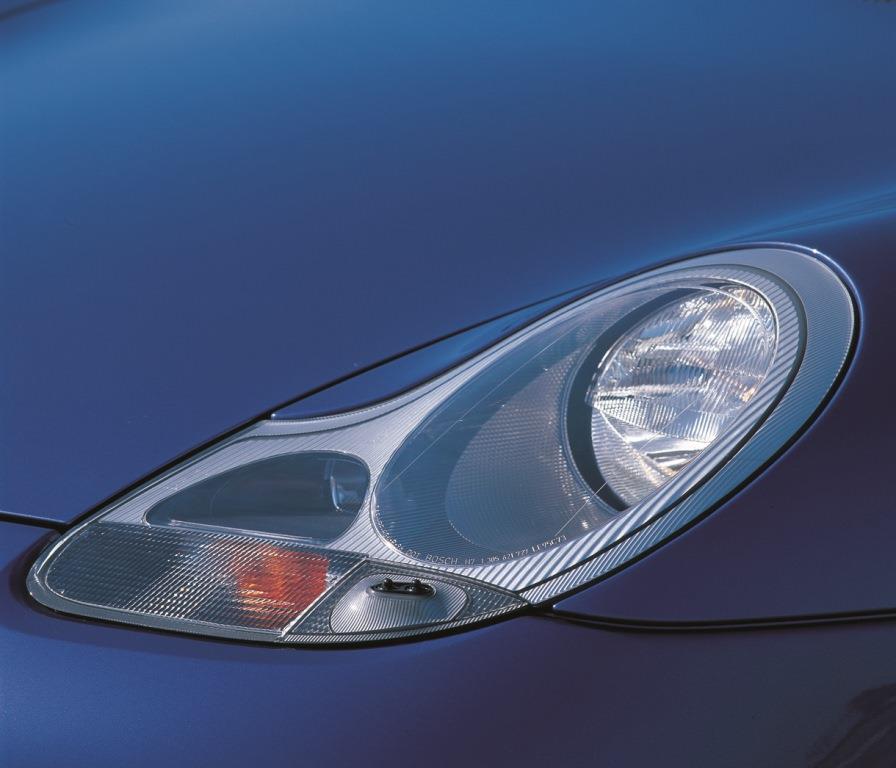
Litronic headlights with dynamic headlight range control
The Carrera 4 and all other 911 variants can be supplied with Litronic headlights on request. Gas discharge lamps illuminate the lane brighter and more intensely, which significantly increases safety when driving at night. Another contribution to safety is the dynamic headlight range control, which not only takes into account the load status of the vehicle, but also changes in the body's inclination caused by driving dynamics. The halogen lamp (H7) for the high beam is surrounded by a particularly effective free-form reflector. When the headlights are dimmed, the dipped beam remains in operation, but its light cone is raised via the headlight range control to improve the area lighting. The Litronic scope of delivery includes a headlight cleaning system.
Individual sports equipment
The Carrera 4 can also be equipped with even more sporty equipment according to the personal taste of the customer. Sports seats with reinforced lateral guidance, 18-inch turbo-look wheels with tire sizes 225/40 ZR 18 and 265/35 ZR 18 and - for the Coupé - a sports chassis with tighter and shorter springs, harder shock absorbers and stronger stabilizers are available separately.
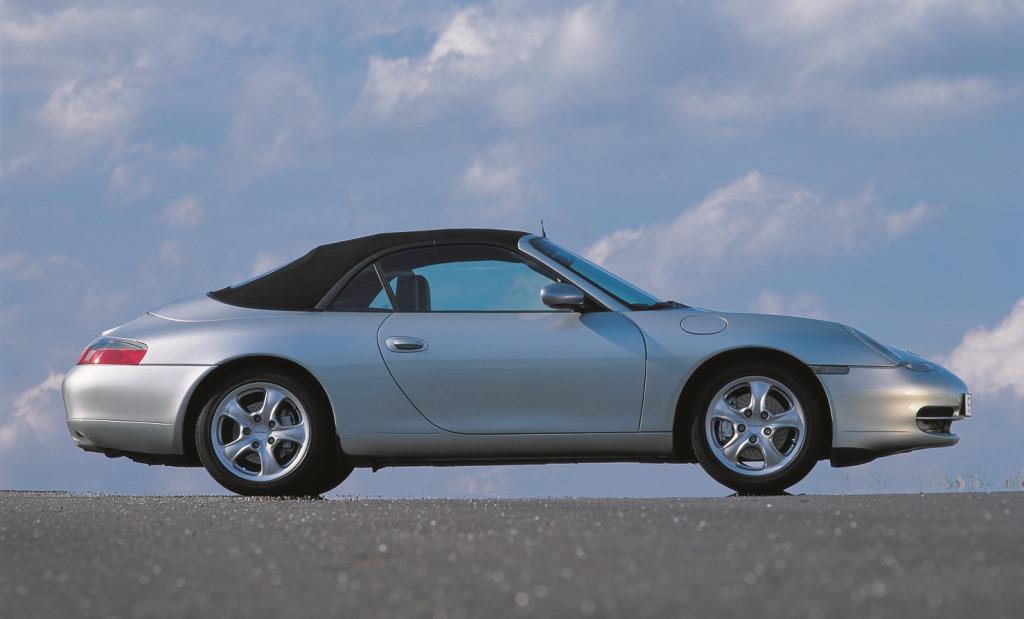
Tradition of all-wheel drive 911 consistently continued
The Carrera 4 consistently continues the tradition of all-wheel drive 911 models that began with the Porsche 959. Start of production: October 1998. Right from the start, the Carrera 4 has been available as a coupé and a convertible with a six-speed manual gearbox or optionally with the five-speed Tiptronic S.
The permanent all-wheel drive with variable power distribution to the front axle via a viscous coupling represents a further development of the previous system. In the new model, power is no longer transmitted to the front according to the transaxle principle in a tube, but via a weight-reduced cardan shaft in the center tunnel. The viscous coupling was relocated from the gearbox output to the housing of the front differential. This improves the weight distribution.
The Carrera 4 underlines its particularly high technical standards not only with the permanent all-wheel drive, but also with the Porsche Stability Management (PSM) used here for the first time. The already existing systems of longitudinal dynamics control such as anti-lock braking system, traction control and automatic brake differential are expanded by a transverse dynamics control that has been specially adapted to the all-wheel drive. The targeted braking intervention and driver-independent influencing of the engine output also control driving stability in the curve. Oversteer is prevented by automatically braking the front wheel on the outside of the bend; Understeer is countered by a deliberate deceleration of the inside rear wheel.
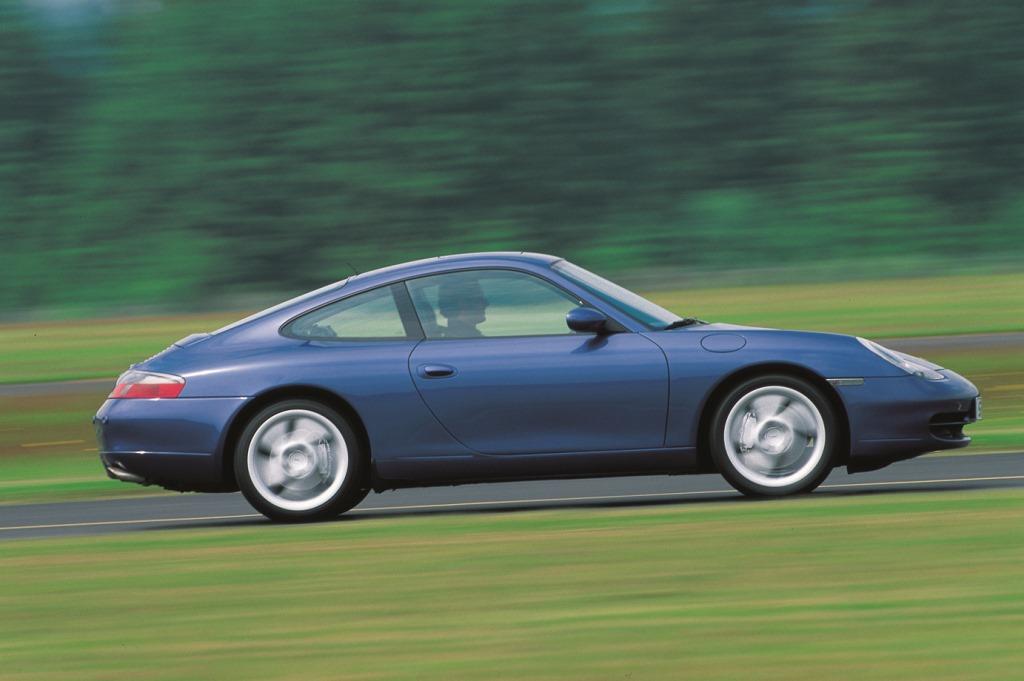
Modifications to the front axle
The body was adapted to the space requirements of the additional drive in the area of the front end. This required changes to the front axle area and a new fuel tank with approximately the same volume. The temporary spare wheel was also replaced by a more compact folding bike. Despite extensive modifications, the front trunk has a capacity of 100 liters in total.
The new Carrera 4 is also powered by the water-cooled boxer engine, which has now proven itself in its third year of production. The displacement of 3.4 liters, the output of 300 PS (221 kW) at 6,800 / min and the torque of 350 Nm at 4,600 / min remain unchanged. The coupé's top speed is 280 km / h. The most noticeable change in the engine is the actuation of the throttle valve via a servomotor. Gas is no longer given mechanically via a train, but via a so-called electronic accelerator pedal. This innovative technology has the additional advantages of better engine response, low pollutant emissions and slightly lower fuel consumption.
The principle of permanent all-wheel drive in the new Carrera 4: The major part of all drive power goes from the transmission directly to the rear axle differential. The size of the drive torque on the front axle is controlled by a viscous coupling. The share of the front wheels in the propulsion is variable between five and 40 percent.
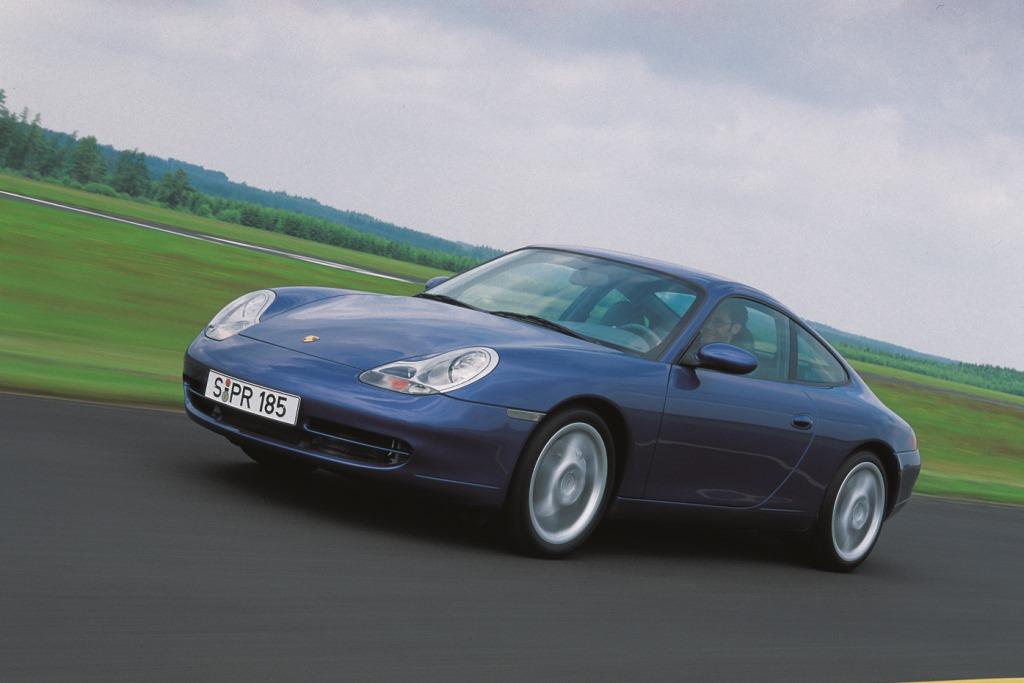
Less weight, better weight distribution
The forward drive shaft no longer runs in a tube, as in the previous model, based on the transaxle principle, but in a frame tunnel. The viscous coupling is now in the housing of the front differential. These changes reduce weight and improve weight distribution.
Since the conception of the Carrera 4 was fixed early on in the development phase of the new generation of models, the all-wheel drive could be implemented with minor changes to the chassis. The front axle received appropriate wheel carriers due to the drive. The springs, shock absorbers and stabilizers are adapted to the driving dynamics of the all-wheel drive version.
The design of the driving behavior of the new Carrera 4 follows a tried and tested model. Even with the four driven wheels, the typical character of the Porsche with the precise, very agile steering behavior in curves is fully retained. More stable straight-line stability at high speed, even less sensitivity to crosswinds and significantly better traction are the advantages of the more complex drive in everyday life.
Extensive changes were necessary to the front part of the floor pan to make room for the differential and the drive shafts. These measures required a change in the shape of the tank without changing the volume. The front trunk, on the floor of which there is a folding bike in the Carrera 4, has become a little smaller. In the Carrera 4 it holds 100 liters.
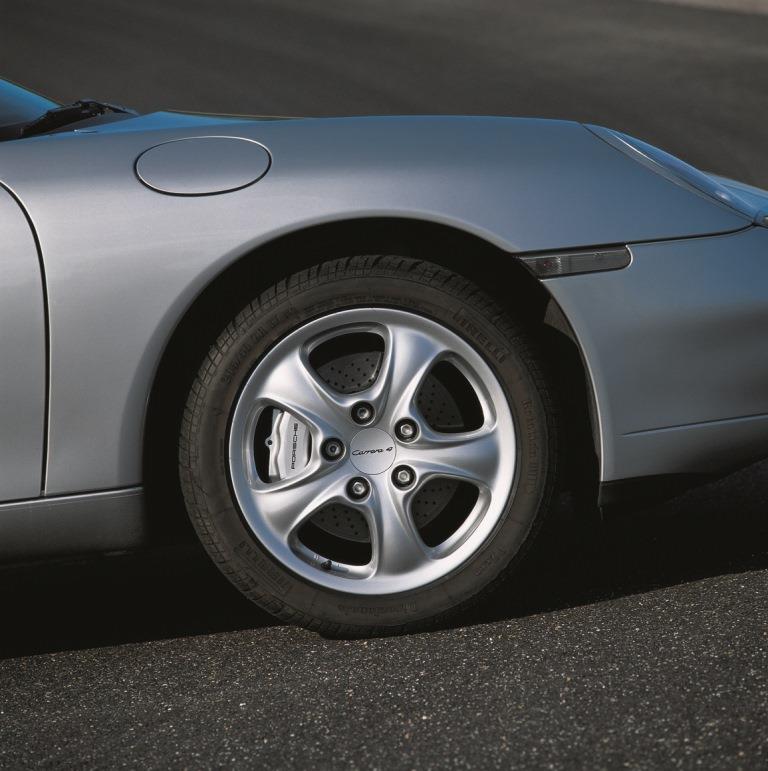
New rim design
The external features of the Carrera 4 remain subtle. Like all 911 models of the 1999 model year, it has white indicators at the front and side (not applicable in the USA) and white-gray indicators at the rear. The lettering Carrera 4 and the brake calipers shine in titanium color. Most noticeable are the 17-inch wheels specially designed for the Carrera 4. The 911 Carrera 4 can also be equipped with 18-inch turbo-look wheels.
Other sporty extras such as sports seats or - in the case of the Coupé - a sports suspension with shorter, tighter springs, stronger stabilizers and harder gas pressure shock absorbers can be ordered individually on request.
The extensive range of additional equipment for the Porsche 911 is fully available for the Carrera 4.
Technical Data
.jpg)
.jpg)
.jpg)
.jpg)
.jpg)
.jpg)
.jpg)
.jpg)
